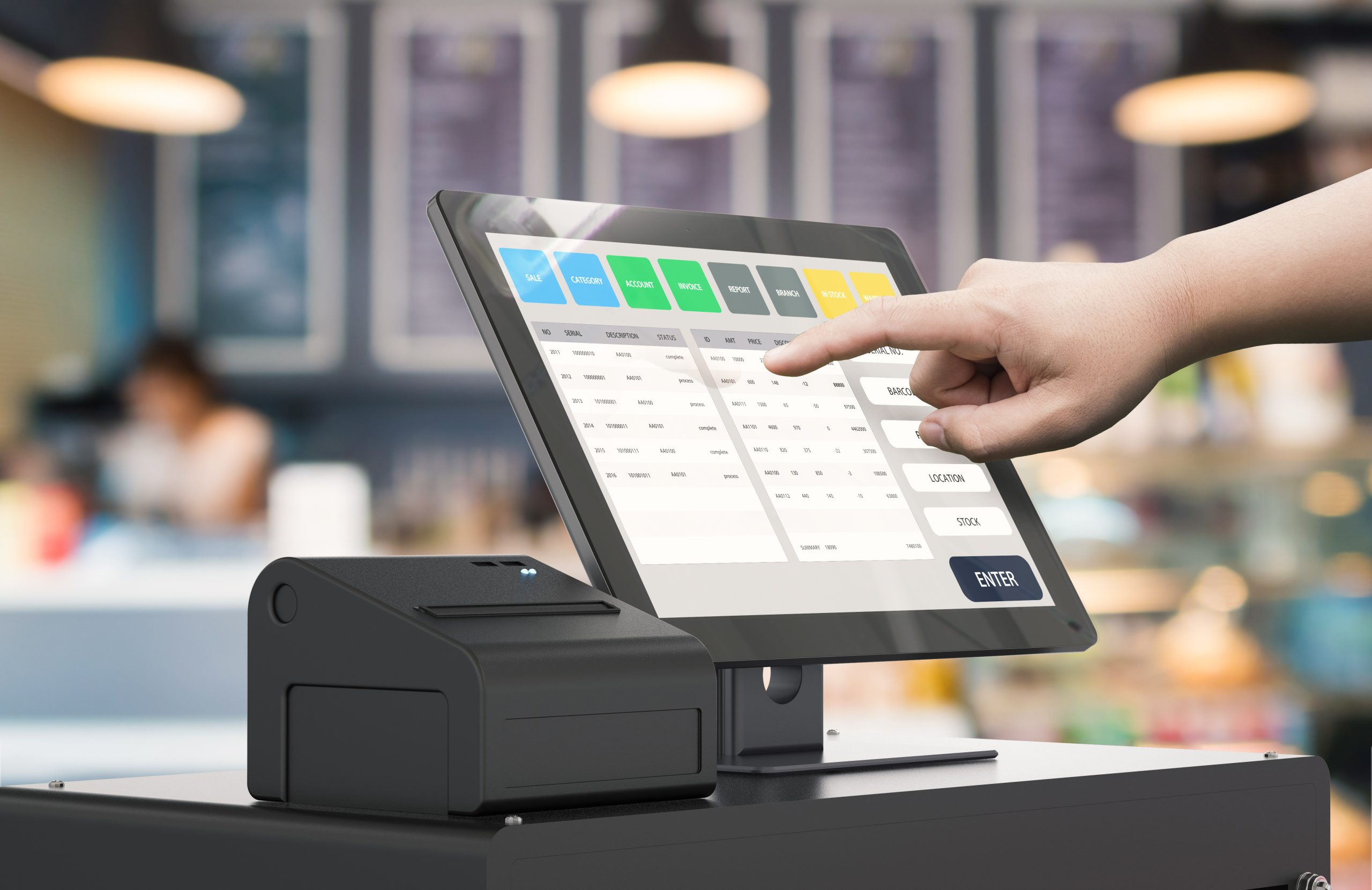Restaurant POS : The Point-Of-Sale System Enhances Checkout Processes Efficiently
Unloading the Power Behind Point of Sale Systems
Have you ever stopped briefly to consider what occurs the minute you swipe your card or tap your phone at a checkout? That flash sets off a cascade of procedures, orchestrated by sophisticated Point of Sale Systems. Far from being simple money registers, these systems serve as the digital heart beat of retail operations, weaving together sales information, inventory, and consumer interaction.
Envision a bustling coffee shop where the barista manages orders, payments, and loyalty benefits all at as soon as. The POS system isn't just a tool-- it's the hidden partner guaranteeing every coffee is represented, every discount rate used correctly, and every consumer leaves satisfied. Restaurant POS. It's the difference between turmoil and smooth service
Core Functions That Drive Effectiveness
- Sales Transaction Management: Tracks each purchase with accuracy, making sure precision in billing and receipts.
- Inventory Control: Immediately updates stock levels, signaling when it's time to reorder.
- Consumer Data Collection: Gathers insights for personalized marketing and loyalty programs.
- Employee Tracking: Schedules shifts and records hours worked.
Why Does This Matter?
Think of the last time you waited in a long checkout line. Aggravating, right? A here well-implemented POS system slashes wait times by improving payment procedures, reducing human mistake, and syncing sales with backend operations in real-time. It resembles having a conductor assisting every note in the symphony of retail.
| Feature | Advantage | Impact |
|---|---|---|
| Real-Time Analytics | Instantaneous sales reporting | Better decision making |
| Mobile Compatibility | Checkout anywhere | Improved consumer experience |
| Integrated Payments | Several payment options | Increased sales chances |
Does not it make you question how businesses ever managed without these systems? In a world where every second counts, the POS is no longer simply a benefit-- it's a necessity.
Translating the Celestial Puzzle
When peering into the night sky, have you ever wondered how ancient mariners determined their place without contemporary technology? Positional astronomy is the art and science behind that celestial navigation. However why does comprehending the accurate position of stars and worlds matter? Because even a minute miscalculation can send you miles off course, specifically when depending on the stars as your compass.
The Subtle Complexities of Coordinate Systems
One might believe the sky is an easy canvas, however it's a dynamic sphere dotted with moving targets. The equatorial coordinate system. POS Machine-- best ascension and declination-- mimics Earth's own location, but with a twist. The Earth's axis wobbles, a phenomenon referred to as precession, which subtly shifts star positions over decades. This demands consistent recalibration. Have you ever observed how Polaris doesn't constantly sit precisely at the North Celestial Pole? That's precession at work
Tips from the Observatory
- Utilize a high-precision chronometer to measure sidereal time precisely; even seconds matter.
- Adjust your instruments often to represent climatic refraction, particularly near the horizon.
- Cross-check star brochures-- various dates can yield varying collaborates.
- Employ software that consider nutation and aberration for contemporary precision.
Astounding Anecdote
Think about the tale of a 16th-century navigator who, utilizing rudimentary tools and naked-eye observations, computed his ship's position with unexpected precision. His secret? Proficiency of celestial mechanics and a deep understanding that the stars, though apparently repaired, become part of a cosmic dance.
Accuracy Demands Patience
Attempting to identify a star without thinking about climatic distortion resembles attempting to read a book through a frosted window. Even the very best telescopes can be tricked by the atmosphere's unpredictable layers. Perseverance, multiple observations, and balancing outcomes often reveal the real positional data. Isn't it interesting how the sky's evident stillness masks such intricate shifts?

Translating the Essence of Positive Operator-Valued Steps
Picture attempting to record a shadow's true shape in a world where light bends unpredictably. Positive Operator-Valued Measures (POVMs) perform a comparable feat in quantum mechanics-- measuring states where classical instinct fails. Unlike the cool sharpness of projective measurements, POVMs allow a richer tapestry of results, weaving probabilities from operators that aren't necessarily orthogonal. Why choose the mundane when you can paint with the complete combination of quantum possibilities?
Quantum Measurement Beyond Traditional Limits
Standard measurements feel rigid, however POVMs provide flexibility. In practice, they emerge from coupling a system with an ancilla, then performing projective measurements on the combined system. This strategy extends the horizon of what can be observed. Ever wondered how to optimize details extraction without disturbing delicate quantum states? POVMs are the key.
- Non-orthogonality: Unlike projectors, POVM components overlap, making it possible for nuanced detection methods.
- Efficiency: The amount of all POVM aspects equals the identity operator, guaranteeing total likelihood.
- Physical Realizability: Any POVM can be implemented by means of Neumark's dilation theorem, connecting abstract math to laboratory experiments.
Professional Tips for Browsing POVM Application
Handling POVMs in practice isn't minor. Quantum noise and decoherence sneakily misshape your ideal operators. To fight this:
- Design POVMs tailored to your experimental setup-- customization beats one-size-fits-all each time.
- Usage convex optimization algorithms to discover the ideal POVM that makes the most of info gain for your quantum state discrimination task.
- Keep in mind, the subtle interplay between operator positivity and measurement efficiency governs the trade-off between accuracy and disruption.
Unseen Complexities in POVM Applications
What does it indicate when a POVM element is positive however not a projector? This subtlety frequently astonishes newbies however exposes a profound truth: quantum measurements do not need to be sharp to be informative. In cryptographic protocols, for example, using POVMs rather of projective measurements can enhance security by extracting details more gently, leaving less traceable disruption.
| Feature | Projective Measurement | POVM |
|---|---|---|
| Operator Type | Orthogonal Projectors | Favorable Semidefinite Operators |
| Measurement Outcomes | Fixed, sharp | Flexible, probabilistic |
| Execution | Direct on system | Requires ancillary systems |
| Details Extraction | Sometimes limited | Optimizable and richer |
Understanding the Intricacies of Proof of Stake
Imagine a world where blockchain validators don't race to resolve puzzles however rather stake their possessions, signaling trust and commitment. This is the essence of the Proof of Stake (PoS) mechanism. Beneath its classy surface area lies an intricate dance of incentives and security steps. Why does staking more tokens increase your opportunity to validate the next block? Due to the fact that it lines up economic incentives, making efforts to defraud the network prohibitively pricey.
The Subtle Dangers of Stake Centralization
One might ask: could a handful of stakeholders subdue a network? The concentration of staked tokens in couple of hands may alter the decentralization ideal, leading to oligarchic control over block development. This isn't just theoretical; it's a real stress in PoS systems. Effective networks counteract this by executing systems such as:
- Slashing conditions that punish harmful stars by confiscating staked tokens
- Randomized validator choice to prevent predictability
- Entrusted staking models enabling token holders to turn over others without giving up ownership
Professional Suggestion: Timing Your Stake
Experienced validators know that timing can be whatever. Joining the staking pool prematurely or late can affect rewards considerably. Network epochs define windows where staking and validation happen-- missing out on these might indicate forfeiting earned rewards. Constantly integrate your staking activity with the network's date schedule to optimize yield.
Energy Effectiveness and Security: A Fragile Balance

| Aspect | Proof of Stake | Evidence of Work |
|---|---|---|
| Energy Intake | Very little, sustainable | High, resource-intensive |
| Attack Cost | Stake loss, economic disincentive | Expensive hardware and electricity |
| Block Finality | Faster due to financial locks | Slower due to probabilistic verification |
Rethinking Security Assumptions
One often overlooked element is the "nothing at stake" issue. Validators might be lured to sign multiple completing chains, offered that it costs them nothing directly-- unlike Evidence of Work where energy expenditure hinders this. Advanced PoS systems resolve this with charges and checkpointing, ensuring validators stake their track record as much as their tokens. Have you considered how this effects your trust in a network?
Point of Sale Solutions in North Carolina
North Carolina is a lively state understood for its varied economy and abundant cultural heritage. With a population going beyond 10 million, it boasts prospering urban centers such as Charlotte and Raleigh, which are centers for financing, innovation, and education. Visitors and residents enjoy tourist attractions like heaven Ridge Mountains, historic sites in Asheville, and the beautiful Atlantic shoreline. The state also has a strong entrepreneurial spirit, making it a perfect environment for organizations to embrace efficient point of sale systems to streamline operations and improve customer experiences.
For expert recommendations and a complimentary consultation on point of sale options, connect to Brilliant POS. They provide well-informed guidance tailored to your particular service needs.